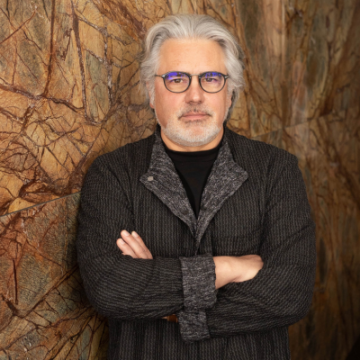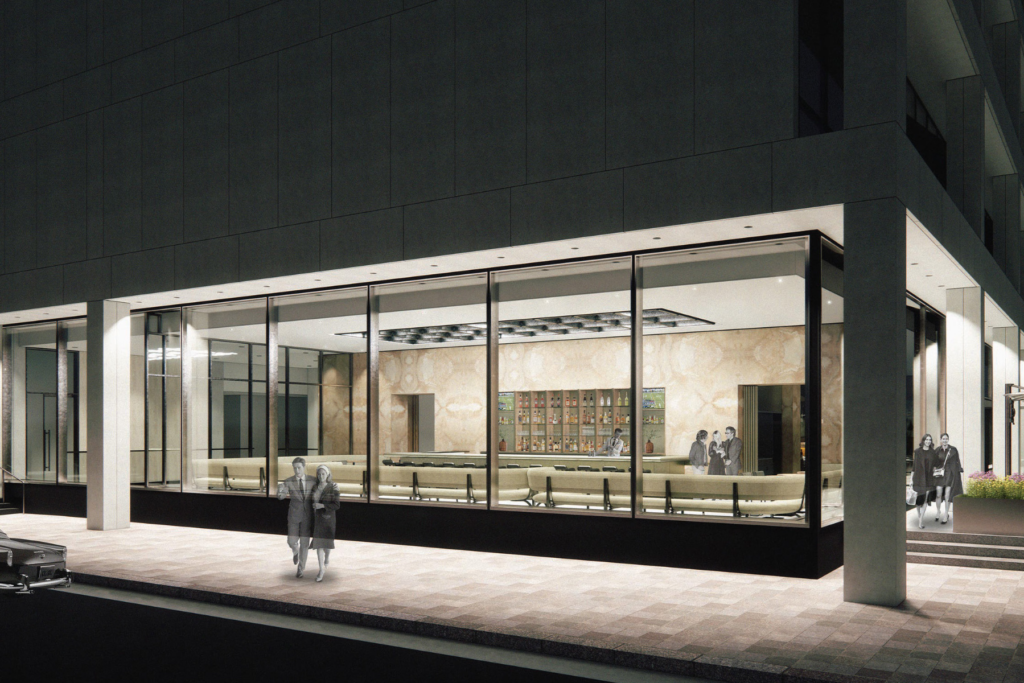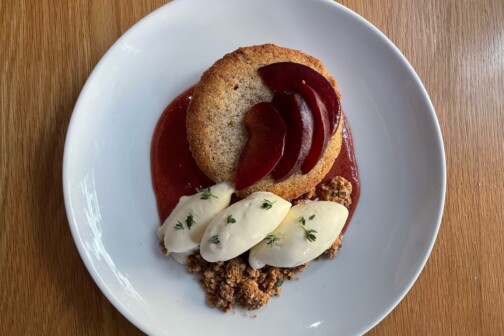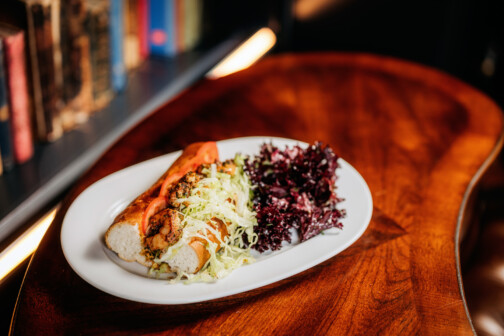Eating out is no longer just about enjoying good food. Much like in retail, the restaurant industry has had to lean harder than ever into the experience economy to entice patrons, achieving excellence across service, culinary creations, and design. That means ambiance isn’t just for romantic dinners or special occasions anymore; it’s a dining experience essential.
For Fort Worth restaurant 61 Osteria, the collaboration between culinary and design teams—function and flare—extended to the venue’s historic bones. Housed on 7th Street on the former First National Bank building’s ground floor, the Italian concept showcases a menu by executive chef Blaine Staniford and owner Adam Jones. Its architecture and design come from Fort Worth firm Ibañez Shaw Architecture. “In a perfect world, [the design process] is a dialogue, and, of course, functionality is always key,” says Gregory Ibañez, princpal at Ibañez Shaw.

Jones, owner of Fort Worth restaurants Grace and Little Red Wasp, came into the collaboration with ideal numbers for seating inside the restaurant’s bar, dining room, and outdoor dining areas. “He originally was hoping to have a private dining room at the restaurant, and we found out fairly early on that it wasn’t going to fit without impacting his normal seat count,” Ibañez says. Jones also mentioned he preferred banquettes with 90-degree seats, sitting patrons elbow to elbow rather than face to face. So, Ibañez incorporated curved booths to allow for the same elbow to elbow seating Jones had wanted in the banquettes. Together, the two mapped 209 seats into the 8,120 square-foot space.
Jones also hoped for a large exhibition window near the kitchen and wanted the design to embrace the concept’s upscale Italian food, while helping facilitate the high level of service he hoped to provide. Ibañez and his team took a walk through and realized building structure would dictate where the kitchen needed to be; exhaust for restaurant HVAC must extend vertically, as grease can collect in any zigzagging turns. “That’s how we started—just understanding what are the various constraints, requirements, and vision,” Ibañez says.
Having covered function, Ibañez then turned to the building’s history for inspiration to create the restaurant’s flare. The former home of First National Bank was designed in the 1960s by Chicago construction and architecture firm Skidmore, Owings & Merrill and is attributed specifically to Gordon Bunshaft, the architect behind the United States Air Force Academy, Yale’s Beinecke Rare Book and Manuscript Library, and more. “This was the first Modern international-style high-rise in Fort Worth,” Ibañez says. “I’m sure it was incredibly striking at the time, and the spirit of those buildings was the embodiment of the post-war optimism of the 50s and going into the 60s through the space race. There was a proliferation of Modern architecture in cities all over the country, including Dallas-Fort Worth.”
The building is surrounded in large, transparent glass panels from the 60s, creating a jewelry box-looking effect when viewed at night from the outside. “As a result, architecturally, we wanted the forms inside the building to be very legible, so that when you went by it, the geometry of is very clear,” Ibañez says. He broke the restaurant up into two clearly delineated spaces, divided by a large marble-clad panel at the center of the room. “That is typical of Modern architecture,” he says.

61 Oysteria’s exterior presents the restaurant as if it were a lit jewelry box.
Photo Credit: Dror Baldinger
The marble also speaks to another key component of 61 Osteria’s design: luxe materials. The block used came from Stone Collection in Carrollton, which led Ibañez and his team through an extensive search for the right Indian Rainforest Green Marble block, eyeing grain, color, and more. Satin-stained red oak fins give glimpses into the kitchen’s workings, providing the transparency into the kitchen’s workings that Jones wanted without the lighting constraints often created by full exhibition windows.
Ibañez’s team designed a chandelier with structures to hang teardrop-shaped anodized aluminum links, creating a sparkle above the dining areas eight center booths. “I believe there’s 24 of these [metallic fabric] rectangles. They’re about five feet tall by about two by two feet, and there’s a light in each one,” Ibañez says. The metallics are sourced from Kriskadecor in Tarragona, Spain. Staniford and Jones selected dishware that references this light fixture in part, with gold leaves around the edge.
Finally, the venue’s restroom is made with Brazilian Black Taurus granite, featuring gold and copper veins that continue the restaurant’s simple elegance. “The materials are so rich and sensuous, because I think sensuality is a big part of dining,” Ibañez says. Italian light fixtures designed by artist Ernesto Gismondi feature hand-blown glass globes with brass fittings.
The firm selected all of the restaurant’s finishes, even the English bridle leather that wraps the main door handles. There are no overt references to Italy beyond the bathroom’s light fixtures, but Ibañez says the color palette pulls in the warmth of the Mediterranean. Yellow seats provide a pop of color.
The entryway features a charcoal-dyed concrete vase sculpture by Austin-based artist Brandon Mike, inspired by a triptych in nearby Barnett Plaza, which was commissioned from American artist Isama Noguchi when the building was designed in the 1960s. “Jones wanted flowers in the entryway,” Ibañez says. “The form is something that is very appropriate for the setting.”
61 Osteria, named in part for the year the building opened, greeted guests for the first time in February. Menu highlights include a wide array of pastas, grilled meats, and more. “When you have a really good client that knows their side of it, as well as [Jones] does, it’s amazing,” Ibañez says. “Together, what we can come up with is more than the sum of the parts.”
Author








